Puerto Rico Weather in November How to Pack Smart
Last updated on June 4th, 2025 at 10:26 pm
So there I was, standing like a drowned rat in front of Café Puerto Rico in Old San Juan, watching my supposedly “quick-dry” shirt drip puddles onto the ancient cobblestones. November 15th, 2019 – a date burned into my memory because that’s when I learned that Caribbean weather doesn’t give a damn about your weather app predictions.
Twenty minutes earlier, I’d been sweating in 85-degree sunshine, taking selfies with those famous colorful buildings. Then – BOOM – the sky opened up like someone flipped a switch. Not the gentle tropical sprinkle I expected, but a full-on deluge that had tourists scrambling under every available awning and doorway.
My cotton t-shirt? Might as well have been made of paper towels. My canvas Converse? Two sponges with laces. And my carefully planned outfit for exploring the historic district? A soggy mess that took three hours to dry back at the hotel.
That afternoon taught me more about packing for Puerto Rico than every travel blog I’d read combined. And honestly? I’m grateful for that soaking because it forced me to figure out what actually works when Mother Nature decides to show off.
Table of Contents
What Puerto Rico Weather in November Really Feels Like
Look, everyone talks about Puerto Rico’s “perfect” November weather, and they’re mostly right. But perfect doesn’t mean predictable, and that’s where most people get tripped up.
During the day, you’re looking at temperatures that hover around 82-84°F. Sounds amazing, right? It absolutely is. But here’s what nobody mentions – that temperature comes with humidity that makes your hair do weird things and your clothes stick to you in ways that feel oddly personal.
The nights cool down to a comfortable 72-76°F, which is genuinely lovely. You can actually sit outside without melting into a puddle of sweat. But then you walk into any restaurant, hotel lobby, or tour bus, and they’ve got the air conditioning cranked so high you’ll be reaching for a sweater.
November sits at the tail end of hurricane season, which officially wraps up on November 30th. Most years, you won’t see any major storms, but those sudden downpours? They’re like clockwork. Usually brief – maybe 20-40 minutes – but intense enough to soak you through if you’re caught off guard.
Here’s what you’re actually dealing with:
- Daily temps that feel perfect until you’re stuck in wet clothes
- Humidity around 75-85% (which is actually reasonable for the Caribbean)
- Random rain bursts that show up with zero warning
- UV rays that will fry you even when it’s cloudy
- Trade winds that make everything feel cooler than it actually is
The humidity in November isn’t the oppressive wall you get in summer months. You can actually breathe without feeling like you’re swimming through soup. But it’s still the Caribbean – your hair products will give up, and anything cotton will stay damp longer than you’d like.
How Weather Changes Across the Island
This blew my mind during my first trip. Puerto Rico might be small, but the weather acts like it’s three different islands depending on where you are.
I drove from Ponce on the southern coast to El Yunque rainforest in about two hours. Started the day in bright sunshine with barely a cloud in sight. Ended up in what felt like a different climate zone entirely – misty, cool, and so green it hurt my eyes.
The southern coast around Ponce stays drier because it’s protected by the central mountains. It’s like nature’s umbrella. You might see half the rainfall you’d get in San Juan, and the sun feels more intense.
El Yunque and the northeastern areas? Complete opposite. The mountains catch all that moisture coming off the Atlantic, which means more rain, cooler temperatures, and humidity that makes you feel like you’re living inside a terrarium.
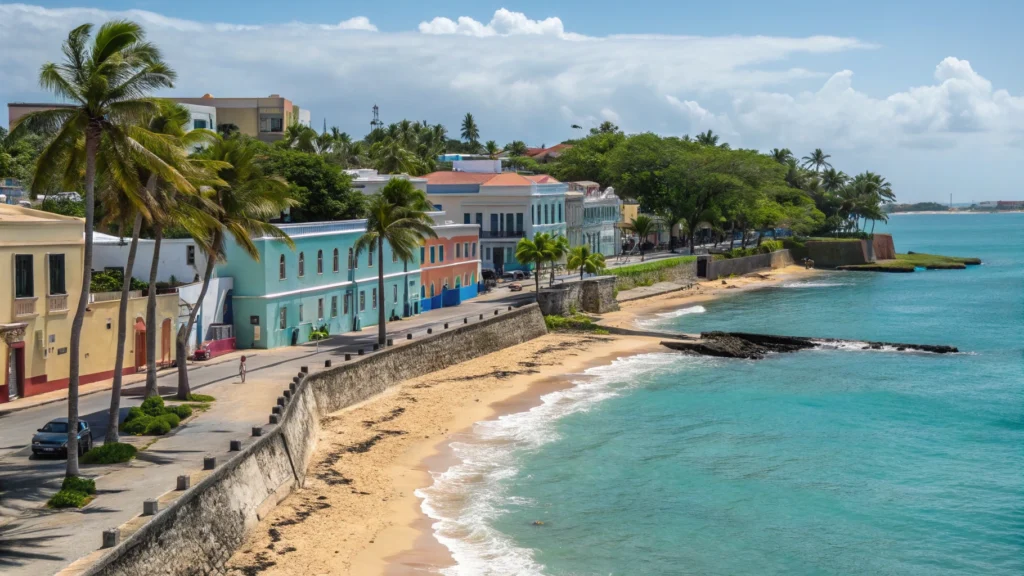

Regional differences you need to know:
- Ponce/Southern coast: Driest spot, hottest days, clearest skies
- San Juan area: Balanced weather, occasional afternoon showers
- Mayagüez/Western coast: Great weather plus incredible sunsets
- El Yunque/Northeast: Coolest temps, most rain, absolutely gorgeous
San Juan falls right in the middle of everything weather-wise. You’ll get those classic afternoon rain showers, but they’re usually predictable enough that you can plan around them.
Packing Strategy That Actually Works
After getting thoroughly humbled by that first November downpour, I completely changed how I pack for Puerto Rico. Forget everything you think you know about vacation packing – this requires a different approach.
The Art of Caribbean Layering
Layering in Puerto Rico isn’t about staying warm – it’s about surviving the extreme air conditioning that every indoor space seems to worship. I’m talking meat-locker-level cold in restaurants, hotels, and tour buses.
Your layering game needs to handle going from 85°F sunshine to 65°F indoor spaces within minutes. Plus, you need fabrics that don’t turn into wet rags when the inevitable rain hits.
My layering system:
- Base layer: moisture-wicking athletic wear (never cotton)
- Light layer: thin cardigan or zip-up hoodie that packs small
- Rain layer: packable jacket that actually keeps you dry
I swear by those thin athletic long-sleeves that surfers wear. They’re perfect for over-air-conditioned restaurants, they provide sun protection on the beach, and they dry fast when you get caught in rain.
Shoes That Don’t Fail You
This is where I see people make the biggest mistakes. You need footwear that can handle wet cobblestones, drying quickly, and walking for hours without your feet staging a revolt.
My feet learned some hard lessons on those Old San Juan cobblestones. When they’re wet – which happens frequently – they become slippery as ice. Canvas shoes turn into water balloons. Leather anything gets ruined by the humidity.
Footwear that actually works:
- Waterproof sandals with serious grip (Tevas saved my life)
- Quick-dry athletic shoes with good tread
- Basic flip-flops for hotel and beach
- Hiking shoes if you’re hitting El Yunque trails
Skip anything leather. The humidity will warp, crack, and generally destroy leather faster than you can say “tropical vacation.” Stick with synthetic materials that dry fast and don’t mind getting soaked.
Rain Gear That Saves Your Trip
After my soaking wet disaster, I became obsessed with staying dry. Not because I hate getting wet, but because wet clothes in air conditioning is miserable, and soggy shoes ruin everything.
A small umbrella helps, but Caribbean trade winds laugh at umbrellas. Those winds can flip any umbrella inside out faster than you can blink. You need backup plans.
Rain protection essentials:
- Compact umbrella that won’t break in wind
- Packable rain jacket (emphasis on packable)
- Quick-dry towel that fits in your bag
- Waterproof case for your phone
- Ziplock bags for anything electronic
Those packable rain jackets that stuff into their own pocket are game-changers. They weigh nothing, take up no space, and keep you dry when it matters. Plus, they double as wind protection for those breezy beach days.
Beach Days and Sun Protection
November beaches in Puerto Rico are absolutely incredible. The water’s still warm from summer heating (around 81°F), but you don’t have the crushing summer crowds or the brutal UV intensity.
But here’s what tricks people – those trade winds make you feel cool and comfortable while the sun is quietly roasting you alive. I’ve watched countless tourists turn bright red on their first day because they didn’t realize how deceptive that cool breeze can be.
Beach survival kit:
- SPF 30+ sunscreen that’s reef-safe (reapply every hour, not every two)
- Rashguard or long-sleeve swim shirt
- Hat that won’t blow away in trade winds
- Insulated water bottle (dehydration sneaks up fast)
- Beach umbrella or pop-up shelter
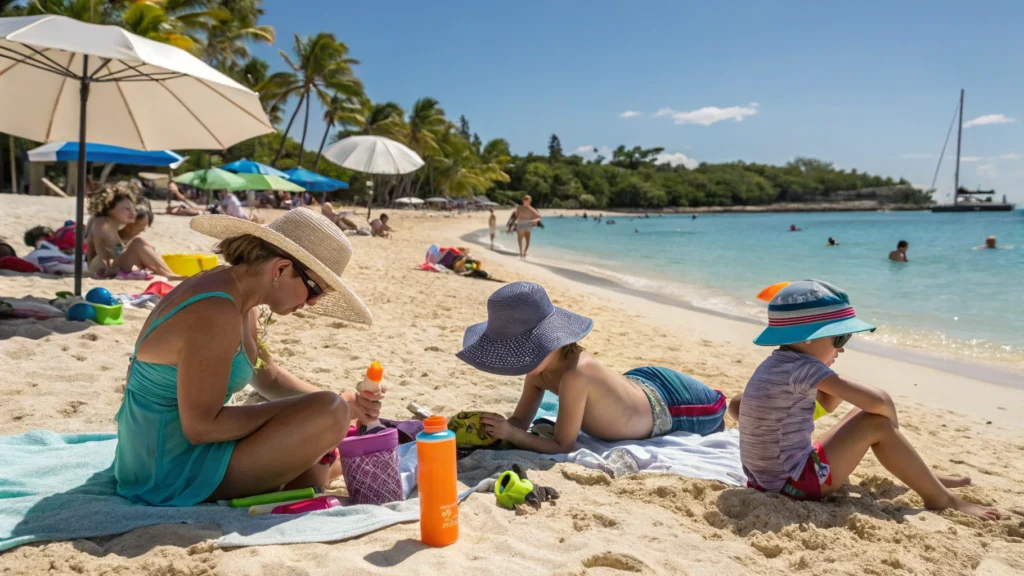

The reef-safe sunscreen thing isn’t just environmental virtue signaling – regular sunscreen is actually illegal in many marine areas around Puerto Rico. Buy the good stuff before you go, because it costs double on the island.
Conquering El Yunque Rainforest
If you skip El Yunque, you’re missing one of the most incredible experiences Puerto Rico offers. But packing for rainforest hiking requires serious thought about what works in constant humidity and unpredictable weather.
The temperature drops about 10 degrees in the mountains, which sounds refreshing until you factor in 90%+ humidity and the fact that everything stays wet longer up there. The trails can be slippery even without rain, and when it does rain, they turn into streams.
Rainforest packing reality:
- Zero cotton clothing (it never dries in that humidity)
- Shoes with aggressive tread that grip wet rocks
- Bug spray with DEET (the mosquitoes are legendary)
- Small backpack with rain cover
- Extra socks because your feet will get soaked
I always bring a complete change of clothes to leave in the car. There’s something magical about putting on dry clothes after hiking through that beautiful, soggy jungle paradise.
City Exploration and Dining Out
Old San Juan’s cobblestone streets are absolutely gorgeous and absolutely brutal on your feet, especially when wet. Those stones have been polished smooth by centuries of foot traffic, and they turn into ice rinks when it rains.
Puerto Rico’s restaurant scene is incredible, but many upscale places have dress codes. You can’t roll up to a nice dinner spot in beach clothes and flip-flops.
Urban exploration gear:
- Walking shoes with rubber soles that grip wet stones
- One nice outfit that doesn’t wrinkle easily
- Light sweater for restaurants that blast AC
- Small backpack for water, rain gear, and impulse purchases


Those cobblestones will destroy your feet if you’re wearing the wrong shoes. I learned this during an eight-hour walking tour that left me hobbling like an old man. Good walking shoes with cushioning and grip aren’t optional – they’re survival gear.
November Weather Week by Week
Early November can still feel like hurricane season’s hanging around. You might see more frequent rain and slightly higher humidity. The weather can be less predictable, with sudden changes that catch you off guard.
Mid-November is honestly the sweet spot. Everything stabilizes, rain becomes more predictable (usually late afternoon showers), and the temperature/humidity combo hits that perfect balance where you feel human.
Late November edges toward dry season. Less rain overall, though those afternoon showers still pop up regularly. Thanksgiving week brings more American tourists, but the weather cooperates more consistently.
The trick is staying flexible. Weather apps lie in the Caribbean. That “0% chance of rain” can turn into a downpour in minutes. Plan for anything, and you’ll be fine.
Biggest Packing Mistakes I Made (Learn from My Pain)
Let me save you from repeating my stupidest errors:
Overpacking clothes like I was moving there permanently. I brought enough outfits for two weeks on a five-day trip. In November humidity, you’ll want to do laundry anyway. Many hotels offer same-day wash and dry services that cost less than checking extra bags.
Bringing thick fabrics and heavy jeans. They take forever to dry and feel awful in humidity. Everything should be lightweight and quick-drying.
Forgetting the expensive little stuff. Reef-safe sunscreen costs $25 on the island versus $12 at home. Same with good bug spray and waterproof phone cases. Pack the pricey necessities.
Packing like Puerto Rico is just another beach destination. It’s not. The weather is more complex and unpredictable than most Caribbean spots. You need gear for multiple scenarios.
What to Pack vs. What to Buy There
You can find basic stuff in Puerto Rico, but at tourist prices that’ll make your wallet cry. Sunscreen, toiletries, and simple clothing are available everywhere, but you’ll pay premium prices.
Pack from home:
- Quality rain gear that actually works
- Prescription medications and specific health needs
- Favorite toiletries and personal care items
- Good walking shoes that fit properly
Buy locally if needed:
- Cheap backup flip-flops
- Emergency clothing replacements
- Beach towels (most hotels provide them)
- Local crafts and souvenirs
The pharmacy chains like Walgreens are everywhere and carry most basics, but expect to pay 50-100% more than mainland prices for everything.
My Battle-Tested Packing List
After five November trips to Puerto Rico, this is exactly what I pack for a week:
Clothing essentials:
- 4-5 moisture-wicking t-shirts (no cotton)
- 3-4 pairs of quick-dry shorts
- 2 pairs lightweight pants that don’t wrinkle
- 1 nice outfit that transitions from day to dinner
- 1 packable sweater or zip-up hoodie
- 2-3 swimsuits (they take forever to dry)
- Week’s worth of moisture-wicking underwear and socks
Essential gear:
- Packable rain jacket that actually fits in its stuff sack
- Compact umbrella rated for wind
- Sun hat with chin strap (trust me on this)
- Polarized sunglasses
- Quick-dry travel towel
- Waterproof phone case that you’ve tested beforehand
Footwear lineup:
- Waterproof sandals with ankle straps
- Comfortable walking shoes with great tread
- Basic flip-flops for hotel room and beach
- Hiking shoes if El Yunque is on your list
Making November Weather Work for You
Honestly, November might be the absolute best time to experience Puerto Rico. You get warm Caribbean weather without summer’s crushing heat or winter’s tourist hordes. Those occasional rain showers? They’re actually refreshing and create some of the most spectacular rainbows you’ll ever see.
I’ve been back to Puerto Rico four more times since that first soggy adventure in Old San Juan. Each trip has been better because I finally figured out how to pack for the reality of Caribbean weather, not the fantasy version from travel brochures.
The secret is embracing the unpredictability instead of fighting it. Yes, you’ll probably get caught in a downpour at some point. But you’ll also experience beach days so perfect they feel fake, sunsets that make you question reality, and that incredible feeling when an afternoon shower passes and everything sparkles like the island just got power-washed for your personal enjoyment.
Pack smart, stay flexible, and prepare for weather that changes faster than your mood. Puerto Rico in November is absolutely incredible when you’re ready for whatever it throws at you.
Got your own Puerto Rico weather stories or packing disasters? I’d love to hear them – drop a comment and let’s swap battle stories from the beautiful, unpredictable Caribbean.

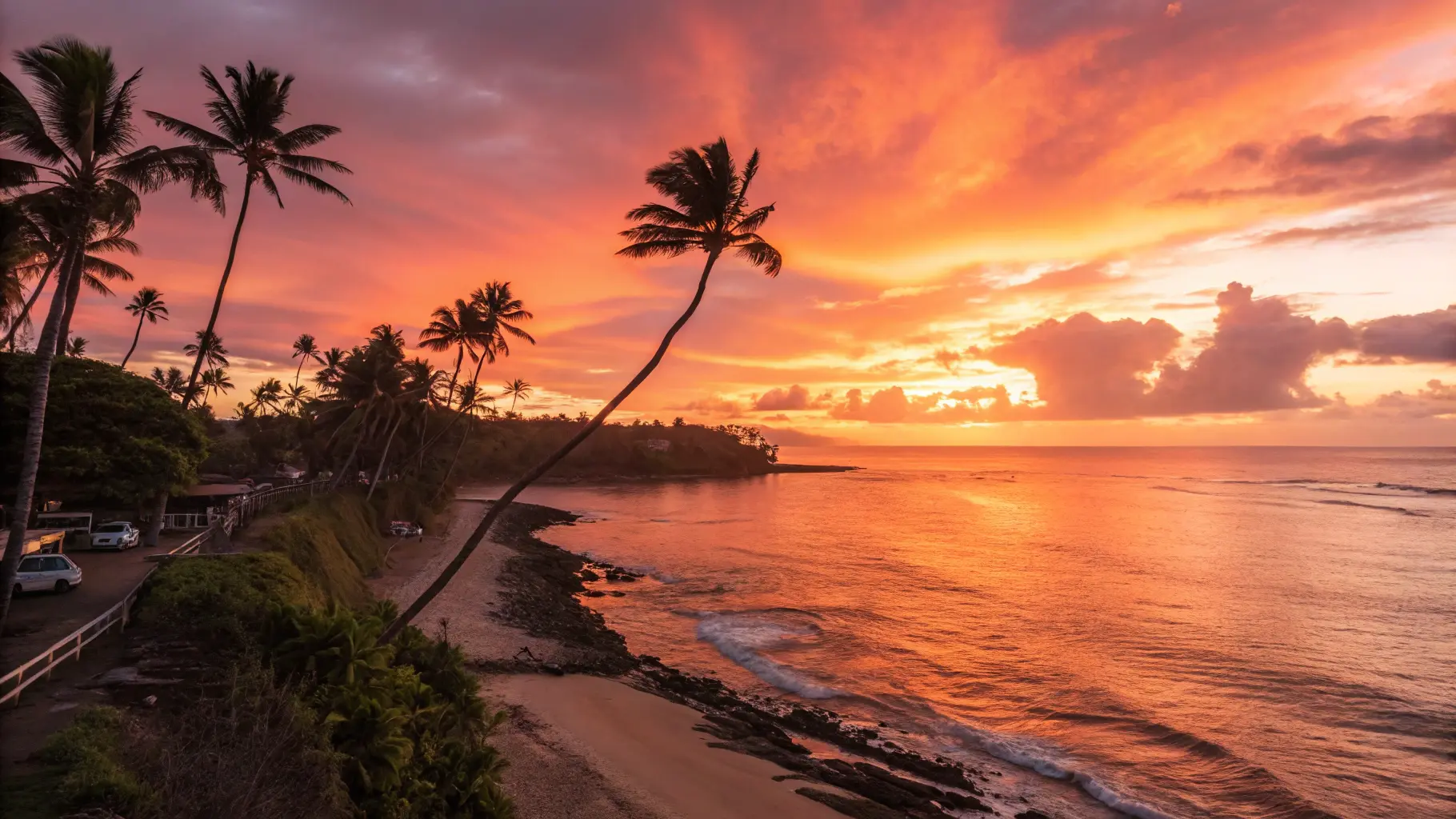


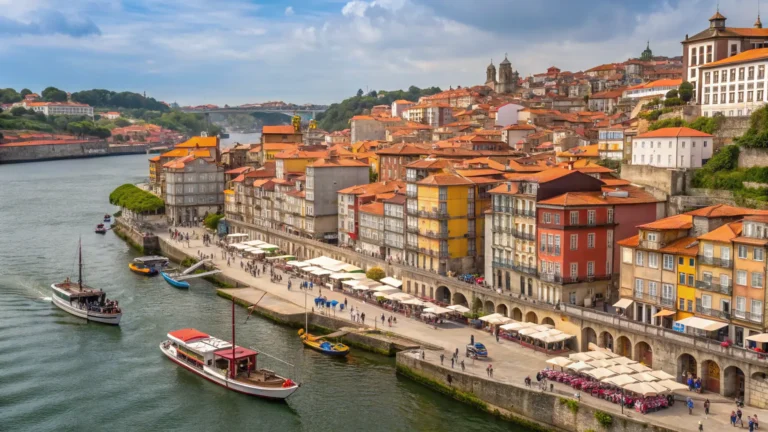

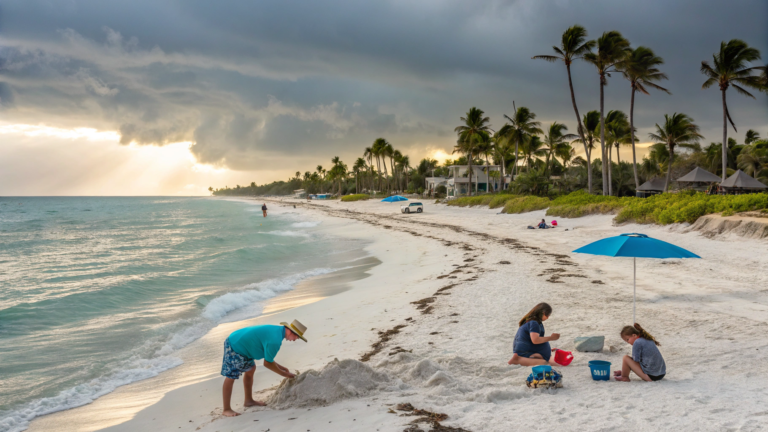
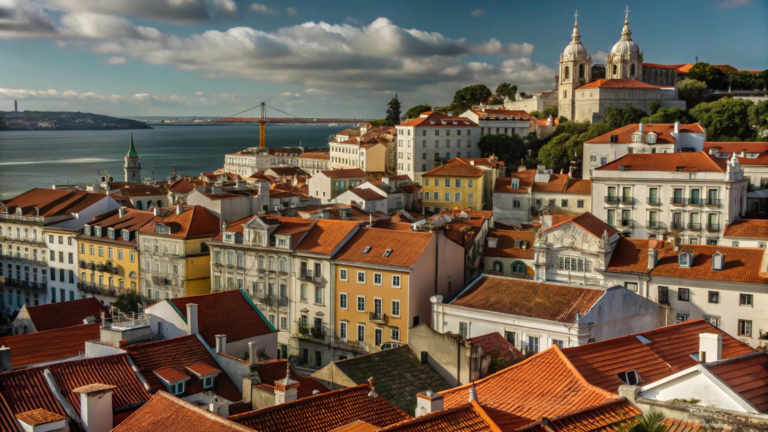
2 Comments